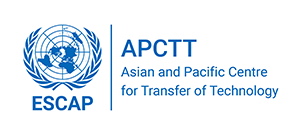Laser Processing (India)
An Indian company has set up its first comprehensive laser materials processing facility inIndia. The laser-based technologies are increasingly perceived to provide attractive alternatives in component manufacture on account of the wide ranging benefits that they offer. This technology is not yet utilized to any significant extent by the Indian industry. The establishment of this was primarily motivated by the recognized need for an easily accessible facilitation center to catalyze the assimilation of laser materials processing by the Industry. The centre is suitably equipped with sophisticated laser systems capable of performing all operation relevant to materials processing namely laser cutting, welding, drilling, surface alloying and cladding, on a variety of engineering materials and components. The available cncKAD software brings together various modules to enable designing of parts, import of drawings form other drafting packages and program verification as well as visualization. Efficient CAD/CAM and CNC integration, complemented by nesting tools which enhance sheet utilization, enables efficient processing of intricate shapes to produce precision components for our quality conscious customers. Laser Cutting It is the forefront of all new manufacturing possibilities afforded by high power lasers. a focused laser beam generates one of the most intense energy sources possible and the material melting/vaporization capability of such a source is gainfully utilized, in conjunction with an assist gas, in laser cutting. Lasers enable high speed cutting with narrow kerfs, besides offer greater flexibility and enhanced quality compared to other competing methods. Using CO2 lasers upto a power of 2000 W, a wide range of materials can be cut dross free. These range from plastics and wood to metals to composites. The maximum thickness that can be effectively cut is material dependent. Laser welding Laser welding makes it possible to produce weld joints that are deep and narrow, with small associated heat affected zones, as a result of the ability of the laser to deliver energy in a highly focused form. Furthermore, because the amount of metal that is melted is small, it is possible to make deep section welds without the use of a filler material. Such autogenous welds can be made in materials of 12 mm thickness or more with a single pass and at much higher weld speeds than possible with conventional methods. Welding of dissimilar materials as well as those that are difficult to weld conventionally (e.g. aluminium) are specific advantages. The ability to accurately control the laser power at all times facilitates computer control and automation. Hence, welds with a high degree of repeatability and quality are obtained on a variety of materials. The laser beam can be optically aimed making it possible to weld in locations that would be normally difficult to reach by other welding processes. Laser Heat Treatment Laser surface transformation hardening is widely used to improve the mechanical properties of highly stressed, ferrous machine parts. Surface hardening increases wear resistance and fatigue life thorugh microstructural changes induced in the metal surface during processing. The depths of the hardened layer are typically 0.1-2.0 mm and hardnes values in the range of HV490 to 820 can be achieed depending upon the chemistry of the material. Generally, no quenchants are required. Output beams are easily shaped by optical components into square spots, lines or into more complex asymmetric shapes for special purposes. This makes it easy to heat not only flat surfaces, but also such machine parts as bearing surfaces, gears, shafts, cylinders, camshafts and the like. Laser Cladding and Alloying These are economicl techniques for altering the surface of a component to improve the part's ability to withstand a harsh environment. Appropriate tailoring of the surface properties by using suitable cladding or alloying materials increases the components wear and corrosion resistance. In many instances, the properties of the clad alloy/substrate mterial composite are unique and cannot be obtained in any other manner regardless of cost. Laser surface modification can save costly and strategic materials by allowing the bulk of a component to be made from inexpensive materials besides making it possible to produce parts with unique properties. Cladding can also be used for refurbishing worn machine parts. Laser Drilling Ever since the successful use of laser energy to drill holes in industrial diamonds used for wire drawing applications. laser drilling has come a long way. For example, the increase in efficiency of gas turbine components demands improved cooling by a large number of cooling holes. Laser drilling is currently the method of choice for drilling these holes at very high speeds and with an acceptable level of hole quality. Using te JK704 pulsed, Nd:YAG laser at CLPM, holes as fine as 200 um can be drilled on a variety of materials. This laser is also capable of drilling several hundred holes in a second in thin materials ranging from super alloys to metal foils and paper.
Sector: Other Technologies n.e.c.
Country: India
Area of Application: Cooling pf semi-conducor devices like diodes, thyristors, MOSFETs etc Cooling of optical fibre junction boxes in telephone exchanges Cooling of personal computers in industrial environments Cooling of transformer oils Waste heat recovery systems Heat pipe based grain dryer for drying of various agro products Heat pipe based in-door solar cooker
Keywords: Laser Processing
Advantages: High processing speeds - increased productivity Non-contact processing - no tool related problems Elimination of finishing operations - reduced cost Ease of automation - processing of complex profile Improved product quality - low rejection rates Precise localization of treatment - negligible distortion
Environmental aspects:
Development Status:
Legal Protection:
Technical specifications:
Transfer Terms: Others
Target Countries:
Estimated cost (US$):
Upload any relevant document:
Contact Person: UN-ESCAP/APCTT
Address: C-2 Qutab Institutional Area
City: New Delhi
Country: India
Zip/Pin Code: 110016

